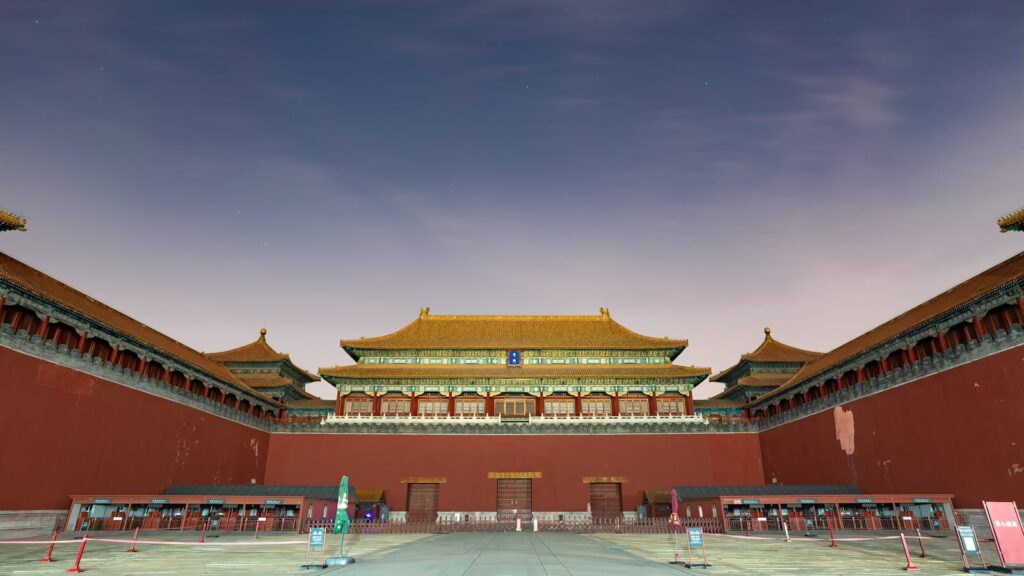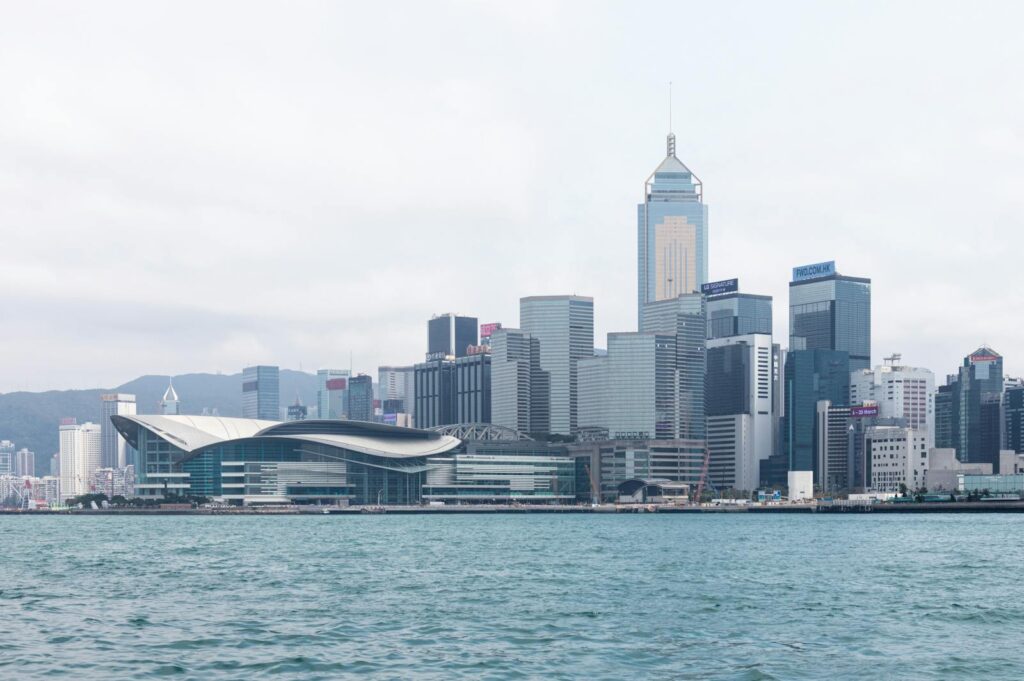
The recent military parade through central Beijing transcended a mere commemorative event; it was a potent and deliberate display of advanced weaponry, meticulously orchestrated to broadcast President Xi Jinping’s vision for a new global order. With China positioned at its apex, this order would be underpinned by high-tech arms that, in many instances, appear to outpace those of its rivals. This grand exhibition along the Avenue of Eternal Peace offered a crucial insight into the People’s Liberation Army’s (PLA) burgeoning capabilities and China’s strategic ambitions.
The unveiling of new long-range nuclear-armed weapons and sophisticated conventional systems signaled a comprehensive modernization drive. This initiative aims to project China’s military and geopolitical influence across Asia and the global stage, challenging the existing post-World War II international framework. A close examination of these advancements is essential for understanding the evolving balance of power.
This analysis delves into the key takeaways from the parade, exploring the specific military advancements and the profound strategic shifts they represent. From intercontinental ballistic missiles to state-of-the-art drones and directed energy weapons, understanding these components is crucial for assessing potential future developments in international relations.

1. **China’s Vision for a New World Order**The colossal military parade in central Beijing served as an explicit declaration of President Xi Jinping’s strategic vision: a new world order with China positioned at its pinnacle. This carefully choreographed event was not merely about commemorating a historical victory, but a statement of intent, indicating that China’s ascendance would be underpinned by a formidable, high-tech military. The weaponry showcased was designed to send an unmistakable message of power and resolve to both allies and potential adversaries.
Xi Jinping, in his speech, articulated this ambition, stating that China “is never intimidated by any bullies” and stressing its “unstoppable” rise. This rhetoric, while not explicitly naming the United States, clearly alluded to “Western hegemony,” framing China’s trajectory as an overcoming of a “century of humiliation.” The parade, therefore, functioned as a powerful symbol of national rejuvenation and a bold challenge to the existing US-led global framework, signaling an intent to reshape international norms.
This vision extends beyond military might to a broader diplomatic strategy. The presence of leaders from 26 countries, including Iran, Pakistan, and Myanmar, underscored China’s role as a “magnet for non-Western powers.” This gathering signaled a “deepening coalition” with China as its anchor, amid escalating tensions over trade and regional conflicts. The parade’s timing, just after a Shanghai Cooperation Organisation (SCO) summit, further amplified Xi’s ambition for a China-led global order.
Military equipment: New world order (politics)
Categories: All articles containing potentially dated statements, All articles that may contain original research, All articles with failed verification, All articles with unsourced statements, Articles containing potentially dated statements from March 2019
Summary: The term “new world order” refers to a new period of history evidencing dramatic change in world political thought and the balance of power in international relations. Despite varied interpretations of this term, it is commonly associated with the notion of world governance.
The phrase “new world order” or similar language was used in the period toward the end of the First World War in relation to Woodrow Wilson’s vision for international peace; Wilson called for a League of Nations to prevent aggression and conflict. In some instances when Franklin D. Roosevelt used the phrase “new world order”, or “new order in the world” it was to refer to Axis powers plans for world domination. Although Roosevelt and Harry S. Truman may have been hesitant to use the phrase, commentators have applied the term retroactively to the order put in place by the World War II victors including the United Nations and the Bretton Woods system as a “new world order.”
The most widely discussed application of the phrase of recent times came at the end of the Cold War. Presidents Mikhail Gorbachev and George H. W. Bush used the term to try to define the nature of the post-Cold War era and the spirit of great power cooperation that they hoped might materialize. Gorbachev’s initial formulation was wide-ranging and idealistic, but his ability to press for it was severely limited by the internal crisis of the Soviet system. In comparison, Bush’s vision was not less circumscribed: “A hundred generations have searched for this elusive path to peace, while a thousand wars raged across the span of human endeavor. Today that new world is struggling to be born, a world quite different from the one we’ve known”. However, given the new unipolar status of the United States, Bush’s vision was realistic in saying that “there is no substitute for American leadership”. The Gulf War of 1991 was regarded as the first test of the new world order: “Now, we can see a new world coming into view. A world in which there is the very real prospect of a new world order. … The Gulf War put this new world to its first test”.
Get more information about: New world order (politics)
Read more about: Billionaire Jack Ma Emerges in Tokyo as China’s Tech Crackdown Reshapes His Empire and Global Influence

2. **The DF-61 Intercontinental Ballistic Missile (ICBM)**Among the hardware paraded, the DF-61 intercontinental ballistic missile (ICBM) drew significant attention. Carried on an eight-axle truck, this weapon marks the PLA Rocket Force’s first new ICBM since the DF-41 was introduced in 2019. Its appearance underscores China’s continued commitment to modernizing and expanding its nuclear deterrent capabilities, a critical component of its strategic posture.
ICBMs like the DF-61 are designed for long-range nuclear strikes, capable of reaching targets across vast distances. Their strategic importance lies in their ability to deliver warheads to adversaries’ homelands, serving as a fundamental deterrent against potential aggression. The public display of such a sophisticated weapon demonstrates China’s technological progress in missile design and its capacity for producing complex, high-impact defense systems.
The mobility provided by the eight-axle truck carrying the DF-61 is crucial. Mobile ICBMs are inherently more survivable than fixed-site launchers, as they can be dispersed and hidden, making them significantly harder to locate and neutralize. This enhances the credibility of China’s second-strike capability, reinforcing its nuclear deterrent and adding complexity to strategic calculations in the Indo-Pacific.
Military equipment: Dongfeng (missile)
Categories: All articles lacking reliable references, All articles with dead external links, Articles containing simplified Chinese-language text, Articles lacking reliable references from June 2025, Articles with dead external links from September 2017
Summary: The Dongfeng (Chinese: 东风; lit. ‘East Wind’) series, typically abbreviated as “DF missiles”, are a family of short, medium, intermediate-range and intercontinental ballistic missiles operated by the Chinese People’s Liberation Army Rocket Force (formerly the Second Artillery Corps).
Get more information about: Dongfeng (missile)

3. **Directed Energy Weapons (Lasers)**A noteworthy unveiling during the parade was China’s showcase of two laser weapon systems, categorized as “directed energy weapons.” One massive unit was designed for naval air defense, while a smaller, truck-mounted version likely protects ground troops. These systems represent a significant leap in defensive capabilities, moving beyond traditional kinetic weapons.
Directed energy weapons utilize electromagnetic energy to disable targets through heat, disruption of internal electrical systems, or blinding sensors. Unlike conventional ammunition, a laser shot costs “just a fraction of a bullet or missile,” making them highly economical against threats like drone swarms. Logistical advantages are also compelling, as they require only an energy source, simplifying supply chains.
The potential operational deployment of these systems, especially “if these are already deployed in numbers in the People’s Liberation Army forces (PLA),” could present “real problems for any adversary’s ability to blunt Chinese military movements around the region.” For the US, these lasers pose a “stealthy, cost-effective threat,” potentially neutralizing air defenses or disabling crucial electronic systems on high-value targets.
Military equipment: Directed-energy weapon
Categories: All Wikipedia articles written in American English, All articles with dead external links, All articles with unsourced statements, Articles with dead external links from February 2024, Articles with dead external links from June 2012
Summary: A directed-energy weapon (DEW) is a ranged weapon that damages its target with highly focused energy without a solid projectile, including lasers, microwaves, particle beams, and sound beams. Potential applications of this technology include weapons that target personnel, missiles, vehicles, and optical devices.
In the United States, the Pentagon, DARPA, the Air Force Research Laboratory, United States Army Armament Research Development and Engineering Center, and the Naval Research Laboratory are researching directed-energy weapons to counter ballistic missiles, hypersonic cruise missiles, and hypersonic glide vehicles. These systems of missile defense are expected to come online no sooner than the mid to late 2020s.
China, France, Germany, the United Kingdom, Russia, India, Israel are also developing military-grade directed-energy weapons, while Iran and Turkey claim to have them in active service. The first use of directed-energy weapons in combat between military forces was claimed to have occurred in Libya in August 2019 by Turkey, which claimed to use the ALKA directed-energy weapon. After decades of research and development, most directed-energy weapons are still at the experimental stage and it remains to be seen if or when they will be deployed as practical, high-performance military weapons.
Get more information about: Directed-energy weapon

4. **Hypersonic Glide Vehicles (HGVs)**The parade also prominently featured missiles equipped with hypersonic glide vehicles (HGVs), a technology where China is considered a world leader. These advanced systems carry warheads at speeds exceeding “five times the speed of sound,” or Mach 5. What truly distinguishes HGVs are their “irregular flight trajectories,” which pose an immense challenge to existing missile defense systems.
The ability of HGVs to perform extreme maneuvers at incredible speeds makes them exceedingly difficult to track and intercept. Traditional missile defense architectures, designed for predictable ballistic trajectories, struggle with their agility and velocity. The YJ-17, a naval version of the DF-17 ballistic missile, was highlighted for its hypersonic glide vehicle, noted for “extreme manoeuvres” and “near-pinpoint accuracy,” and is “potentially nuclear-capable.”
Beyond the YJ-17, the YJ-15, YJ-19, and YJ-20 anti-ship missiles indicate a broader investment in hypersonic technology. Launched from China’s vast navy, these weapons “threaten US carriers across the Indo-Pacific.” This arsenal signals a strategic intent to deter naval incursions, particularly in contested waters, by holding high-value assets at extreme risk, thereby redefining naval warfare.
Military equipment: Hypersonic glide vehicle
Categories: All articles containing potentially dated statements, Articles containing potentially dated statements from 2022, Articles with short description, Ballistic missiles, CS1 French-language sources (fr)
Summary: A hypersonic glide vehicle (HGV) is a type of warhead for ballistic missiles that can maneuver and glide at hypersonic speed. It is used in conjunction with ballistic missiles to significantly change their trajectories after launch. Conventional ballistic missiles follow a predictable ballistic trajectory and are vulnerable to interception by the latest anti-ballistic missile (ABM) systems. The in-flight maneuverability of HGVs makes them unpredictable, allowing them to effectively evade air defenses. As of 2022, hypersonic glide vehicles are the subject of an arms race.
Get more information about: Hypersonic glide vehicle

5. **Advanced Drone Systems (Multi-domain)**A striking feature of the parade was the “impressive array of drones,” showcasing China’s significant advancements in unmanned systems across multiple domains. From “extra-large unmanned submarines” to “aircraft that can fly as ‘loyal wingmen’ to the PLA Air Force’s state-of-the-art stealth fighters,” the diversity and sophistication were evident, highlighting China’s focus on “intelligent warfare.”
The presence of “extra-large unmanned underwater vehicles (XLUUVs)” like the AJX002, “18-20 metres long,” signaled China’s lead in this domain. These underwater drones, emerging from trials, are likely designed for reconnaissance, torpedo deployment, or mine-laying. Their ability to “operate undetected in contested waters like the Taiwan Strait” challenges traditional submarine dominance. China is noted for boasting “the world’s largest XLUUV programme.”
Ground drones, some armed, others for mine-clearing or logistics, were also integrated. These suggest a future battlefield where unmanned platforms augment human soldiers. The “loyal wingmen” concept indicates advanced aerial autonomy, potentially enhancing manned aircraft survivability. Malcolm Davis of ASPI noted, “The unmanned systems that the Chinese are displaying today are quite significantly advanced. They seem to be more advanced in some respects than what we’re seeing in the West, and they’re in operational service.”
Military equipment: Joint All-Domain Command and Control
Categories: All Wikipedia articles needing copy edit, All articles with dead external links, Articles with dead external links from October 2022, Articles with short description, Military strategy
Summary: Joint All-Domain Command and Control or JADC2 is the concept that the Department of Defense has developed to connect sensors from all branches of the armed forces into a § unified network powered by artificial intelligence. These branches include the Air Force, Army, Marine Corps, and Navy, as well as Space Force.
Each military branch has its initiative that contributes to JADC2; the Army has Project Convergence, the Navy has Project Overmatch, and the Air Force has the Advanced Battle Management System, also known as ABMS. The Space Force has the Space Development Agency’s National Defense Space Architecture (NDSA). See § Outernet
One primary application of JADC2 is a request— a call for fire (CFF). Combined JADC2 is almost ready for deployment pending Congressional approval of FY2024 funding.
Get more information about: Joint All-Domain Command and Control
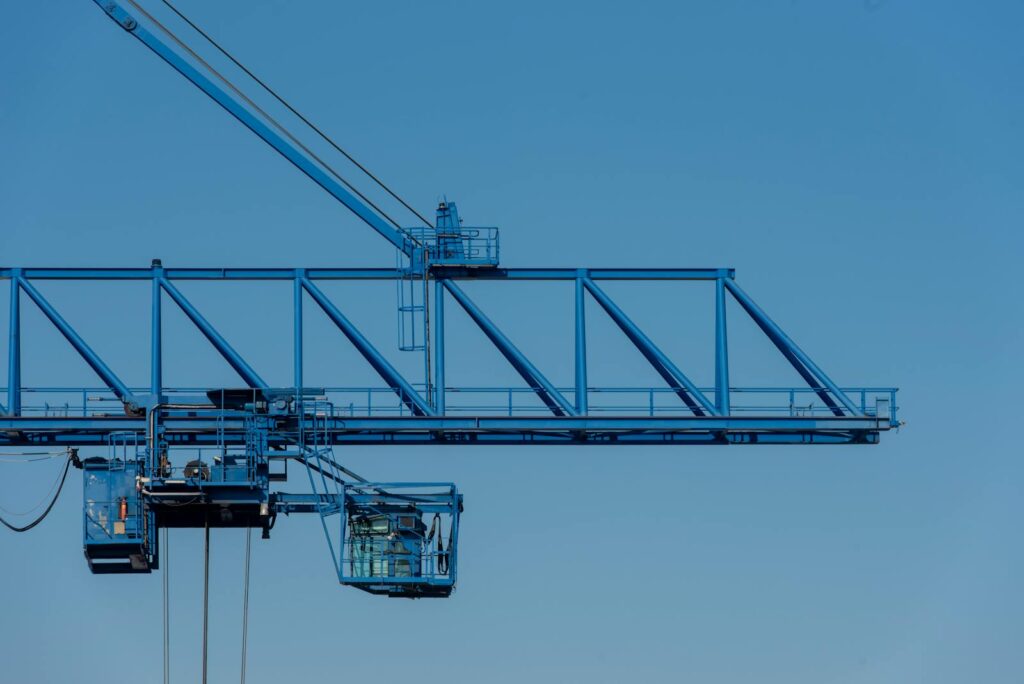
6. **Industrial Might and Production Capacity**The “huge volume of military hardware exhibited” at the parade powerfully attested to China’s formidable industrial capacity, underscoring its ability to translate strategic intent into tangible military power. This might is foundational to “perhaps eventually enforce Xi’s vision of the world,” echoing the United States’ industrial output during World War II, a conflict the parade commemorated.
However, a critical distinction is the current state of industrial capacity. While “US industry spelled the end of the Axis powers 80 years ago,” “America now doesn’t have the capacity to turn out weaponry in the numbers that China can.” This offers Beijing a significant strategic advantage, enabling rapid scaling of production and deployment.
Malcolm Davis of ASPI highlighted this, stating, “What the Chinese are demonstrating here is an ability to develop advanced military capabilities by themselves, deploy them operationally and do it faster than what you’re seeing happen in the West.” He added that they “also do it in larger volume in terms of sheer numbers of weapons deployed.” This indigenous development and mass production capability forms a cornerstone of China’s long-term military strategy.
Military equipment: Industrial and production engineering
Categories: All articles with unsourced statements, Articles with short description, Articles with unsourced statements from January 2025, CS1 errors: ISBN date, Engineering disciplines
Summary: Industrial and production engineering (IPE) is an interdisciplinary engineering discipline that includes manufacturing technology, engineering sciences, management science, and optimization of complex processes, systems, or organizations. It is concerned with the understanding and application of engineering procedures in manufacturing processes and production methods. Industrial engineering dates back all the way to the industrial revolution, initiated in 1700s by Sir Adam Smith, Henry Ford, Eli Whitney, Frank Gilbreth and Lilian Gilbreth, Henry Gantt, F.W. Taylor, etc. After the 1970s, industrial and production engineering developed worldwide and started to widely use automation and robotics. Industrial and production engineering includes three areas: Mechanical engineering (where the production engineering comes from), industrial engineering, and management science.
The objective is to improve efficiency, drive up effectiveness of manufacturing, quality control, and to reduce cost while making their products more attractive and marketable. Industrial engineering is concerned with the development, improvement, and implementation of integrated systems of people, money, knowledge, information, equipment, energy, materials, as well as analysis and synthesis. The principles of IPE include mathematical, physical and social sciences and methods of engineering design to specify, predict, and evaluate the results to be obtained from the systems or processes currently in place or being developed. The target of production engineering is to complete the production process in the smoothest, most-judicious and most-economic way. Production engineering also overlaps substantially with manufacturing engineering and industrial engineering. The concept of production engineering is interchangeable with manufacturing engineering.
As for education, undergraduates normally start off by taking courses such as physics, mathematics (calculus, linear analysis, differential equations), computer science, and chemistry. Undergraduates will take more major specific courses like production and inventory scheduling, process management, CAD/CAM manufacturing, ergonomics, etc., towards the later years of their undergraduate careers. In some parts of the world, universities will offer Bachelor’s in Industrial and Production Engineering. However, most universities in the U.S. will offer them separately. Various career paths that may follow for industrial and production engineers include: Plant Engineers, Manufacturing Engineers, Quality Engineers, Process Engineers and industrial managers, project management, manufacturing, production and distribution, From the various career paths people can take as an industrial and production engineer, most average a starting salary of at least $50,000.
Get more information about: Industrial and production engineering
Read more about: Unearthing America’s Hidden Past: 14 Forgotten Historical Moments That Are Trending for Shocking Reasons
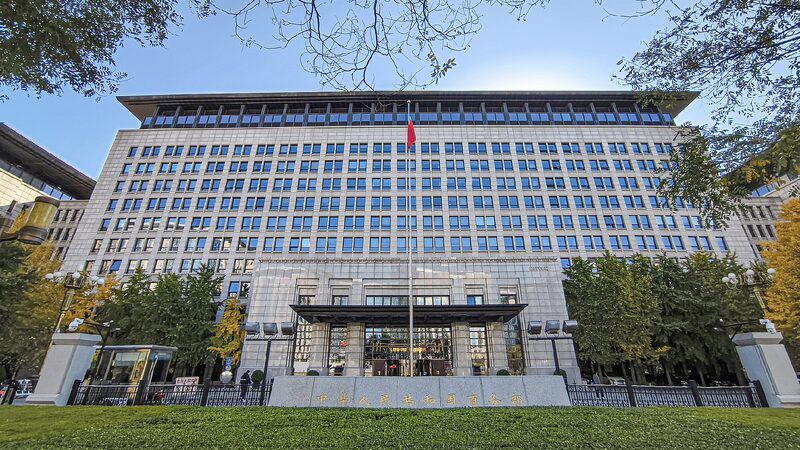
7. **Escalating Defense Spending**An analysis by the Center for Strategic and International Studies (CSIS) provided stark figures illustrating the “math tipping in Beijing’s favor” regarding defense spending. The report revealed that China’s defense spending has “increased 13-fold in the past 30 years,” showcasing aggressive and sustained military investment.
While Beijing still allocates “only about a third of what the US does on defense,” the report highlights a rapid trend of closing this gap, with spending “cut in half in the past 12 years.” This trajectory suggests China is systematically building a military budget that, while not yet matching the US in absolute terms, is growing at a rate allowing for substantial modernization and expansion year after year.
Regionally, the disparity is even more pronounced. The CSIS report states, “China towers over its neighbors, spending five times as much on defense as Japan and nearly seven times as much as South Korea—two key US allies in the region.” This overwhelming financial commitment ensures a significant qualitative and quantitative edge over immediate neighbors, cementing regional dominance.
We have thoroughly examined the formidable hardware and industrial underpinnings of China’s burgeoning military might. Yet, the Beijing parade was more than a mere showcase of advanced weaponry; it was a carefully constructed tableau of geopolitical intent. It broadcast intricate messages about China’s global ambitions, its evolving alliances, and the potential reordering of international relations. These implications extend far beyond tactical capabilities, reaching into the very fabric of global diplomacy and future power balances.
Military equipment: Agreement on 5% NATO defence spending by 2035
Categories: 2030 in politics, All articles with unsourced statements, Articles with unsourced statements from June 2025, Budgets, CS1 Dutch-language sources (nl)
Summary: At the 2025 The Hague NATO summit, member states pledged to increase defence spending to five percent of GDP in what is called The Hague Investment Plan.
The Agreement on 5% Defence Spending by 2035 was the principal outcome of the 2025 NATO Summit, held in The Hague, Netherlands, on 24–25 June 2025. Under this declaration, all 32 NATO member states except Spain, which received an exemption, committed to raising their annual defence and security-related expenditures to 5% of gross domestic product (GDP) by 2035, with progress to be reviewed in 2029.
Get more information about: Agreement on 5% NATO defence spending by 2035
Read more about: James E. Ferguson II: A Pillar of Justice and Civil Rights Advocacy Who Transformed America’s Legal Landscape
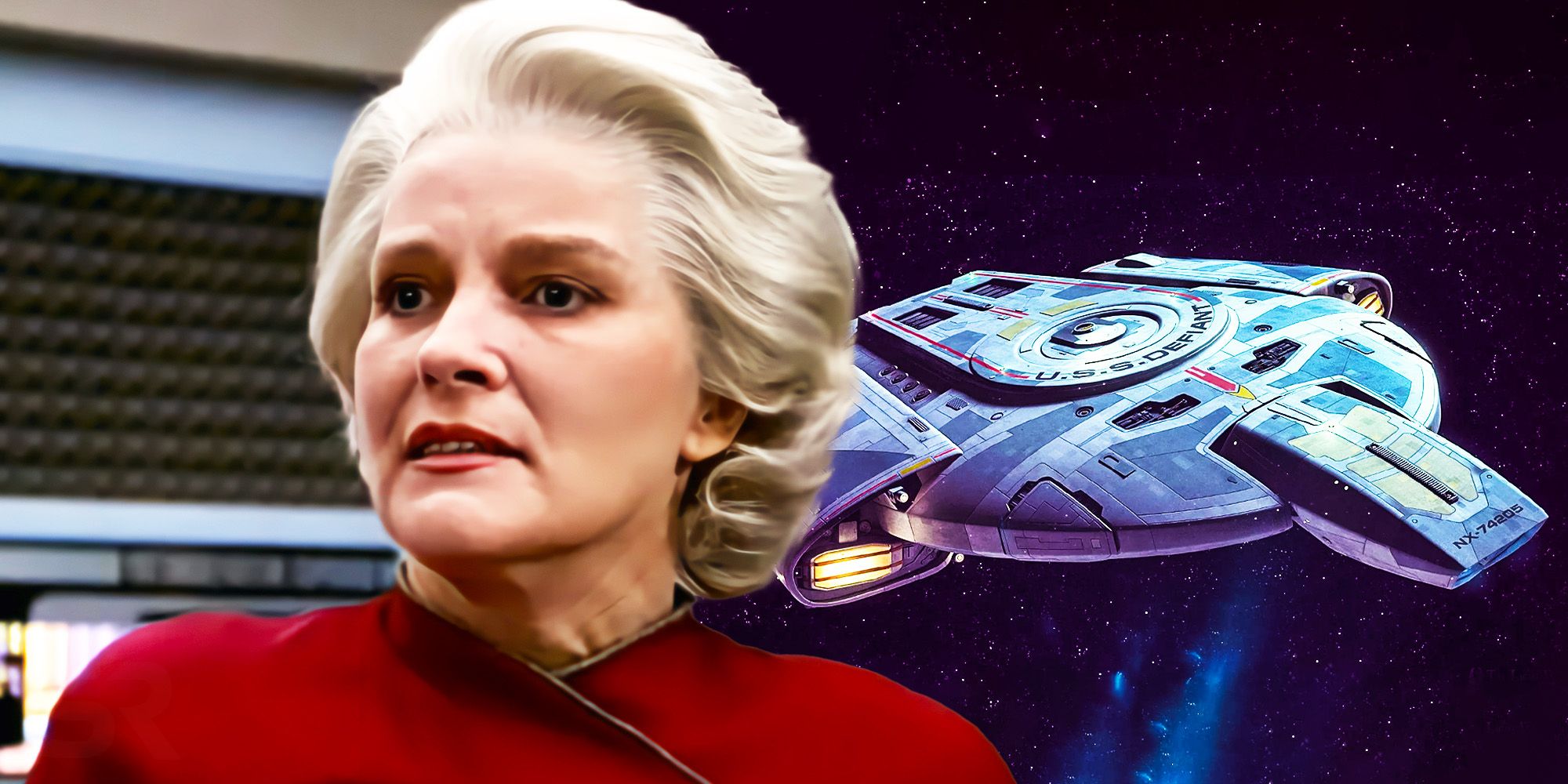
8. **A Defiant Alliance: Xi, Putin, and Kim’s Power Play**One of the most profound diplomatic signals from the parade was the unprecedented public display of unity among Xi Jinping, Vladimir Putin, and Kim Jong Un. This gathering, the first time these three leaders had been seen publicly, was a potent piece of “political theatre.” It projected a united front against the existing “US-led global framework.” Their shoulder-to-shoulder appearance in Tiananmen Square spoke volumes about a deepening coalition, with China at its strategic core.
The event’s guest list further underscored this realignment. Leaders from 26 countries, including prominent figures from Iran, Pakistan, and Myanmar, attended, portraying China as a “magnet for non-Western powers.” This assembly explicitly signaled China’s intent to forge a new bloc amid escalating global tensions. Xi Jinping’s rhetoric, asserting China “is never intimidated by any bullies” and stressing its “unstoppable” rise, implicitly challenged “Western hegemony.”
This visible alignment, particularly with leaders facing Western sanctions, carries significant global implications. It crystallizes a discernible shift towards a multipolar world, where China’s military and diplomatic clout offers an alternative to the traditional Western-dominated order. The timing, immediately following a Shanghai Cooperation Organisation (SCO) summit, amplified Xi’s ambition for a China-led global architecture, compelling nations like India to navigate this bifurcated geopolitical landscape.
Military equipment: Xi Jinping
Name: Xi Jinping
NativeName: nobold
NativeNameLang: zh-Hans-CN
Caption: Xi in 2025
Office: General Secretary of the Chinese Communist Party
TermStart: 15 November 2012
Predecessor: Hu Jintao
Office1: President of China
Premier1: Li Keqiang,Li Qiang
Vicepresident1: undefined
TermStart1: 14 March 2013
Predecessor1: Hu Jintao
Office2: Chairman of the Central Military Commission (China)
Deputy2: Fan Changlong,Xu Qiliang,Zhang Youxia,He Weidong
TermStart2: Party Commission: 15 November 2012,State Commission: 14 March 2013
Predecessor2: Hu Jintao
Office3: Vice Chairman of the Central Military Commission
1blankname3: Chairman
1namedata3: Hu Jintao
Alongside3: Guo Boxiong
Term3: Party Commission:
18 October 2010 – 15 November 2012,State Commission:
28 October 2010 – 14 March 2013
Office4: Vice President of China
President4: Hu Jintao
TermStart4: 15 March 2008
TermEnd4: 14 March 2013
Predecessor4: Zeng Qinghong
Successor4: Li Yuanchao
BirthDate: [object Object]
BirthPlace: Beijing, China
Party: Chinese Communist Party
Spouse: [object Object]
Children: Xi Mingze
Residence: Zhongnanhai
Education: B. S.,LL.D.
Parents: Xi Zhongxun,Qi Xin
Relatives: Qi Qiaoqiao
Signature: Xi Jinping signature (2023).svg
Footnotes: Collapsible list
Titlestyle: background-color:#FCF; text-align:center;
Title: Other offices held
Bullets: on
Module: Infobox scientist
Embed: true
ThesisTitle: A Tentative Study on China’s Rural Marketization
ThesisUrl: https://archive.org/details/20220730_20220730_1031
ThesisYear: 2001
DoctoralAdvisor: lang
Module2: Listen
Module3: Infobox Chinese
Child: true
Pic: Xi Jinping (Chinese characters).svg
Piccap: “Xi Jinping” in simplified (top) and traditional (bottom) Chinese characters
Picupright: 0.5
S: 习近平
T: 習近平
P: Xí Jìnpíng
Bpmf: ㄒㄧˊ ㄐㄧㄣˋ ㄆㄧㄥˊ
W: tonesup
Wyr: Syí Jìnpíng
Mps: Shí Jìn-píng
Mi: IPAc-cmn
H: Sip^6 Kiun^4 Pin^2
Phfs: Si̍p Khiun-phìn
Y: Jaahp Gahn-pìhng
Ci: IPAc-yue
J: Zaap6 Gan6-ping4
Poj: Si̍p Kīn-pêng
Tl: Si̍p Kīn-pîng
Bp: Síp Gîn-bíng
Buc: Sĭk Gê̤ṳng-ping
Lmz: Zih8 Jin6-bin6
Order: st
Awards: List of awards and honours received by Xi Jinping
Alt: Xi in 2024, wearing black suit, smiling
Nationality: Chinese
Categories: 1953 births, 20th-century Chinese philosophers, 20th-century Chinese politicians, 20th-century atheists, 21st-century Chinese male writers
Summary: Xi Jinping (born 15 June 1953) is a Chinese politician who has been the general secretary of the Chinese Communist Party (CCP) and chairman of the Central Military Commission (CMC), and thus the paramount leader of China, since 2012. Since 2013, Xi has also served as the seventh president of China. As a member of the fifth generation of Chinese leadership, Xi is the first CCP general secretary born after the establishment of the People’s Republic of China (PRC).
The son of Chinese communist veteran Xi Zhongxun, Xi was exiled to rural Yanchuan County, Shaanxi Province, as a teenager following his father’s purge during the Cultural Revolution. He lived in a yaodong in the village of Liangjiahe, where he joined the CCP after several failed attempts and worked as the local party secretary. After studying chemical engineering at Tsinghua University as a worker-peasant-soldier student, Xi rose through the ranks politically in China’s coastal provinces. Xi was governor of Fujian from 1999 to 2002, before becoming governor and party secretary of neighboring Zhejiang from 2002 to 2007. Following the dismissal of the party secretary of Shanghai, Chen Liangyu, Xi was transferred to replace him for a brief period in 2007. He subsequently joined the Politburo Standing Committee (PSC) of the CCP the same year and was the first-ranking secretary of the Central Secretariat in October 2007. In 2008, he was designated as Hu Jintao’s presumed successor as paramount leader. Towards this end, Xi was appointed the eighth vice president and vice chairman of the CMC. He officially received the title of leadership core from the CCP in 2016.
While overseeing China’s domestic policy, Xi has introduced far-ranging measures to enforce party discipline and strengthen internal unity. His anti-corruption campaign led to the downfall of prominent incumbent and retired CCP officials, including former PSC member Zhou Yongkang. For the sake of promoting “common prosperity”, Xi has enacted a series of policies designed to increase equality, overseen targeted poverty alleviation programs, and directed a broad crackdown in 2021 against the tech and tutoring sectors. Furthermore, he has expanded support for state-owned enterprises (SOEs), emphasized advanced manufacturing and tech development, advanced military-civil fusion, and attempted to reform China’s property sector. Following the onset of the COVID-19 pandemic in mainland China, he initially presided over a zero-COVID policy from January 2020 to December 2022 before ultimately shifting towards a mitigation strategy after COVID-19 protests occurred in China.
Xi has pursued a more aggressive foreign policy particularly with regards to China’s relations with the United States, the nine-dash line in the South China Sea, and the Sino-Indian border dispute. Additionally, for the sake of advancing Chinese economic interests abroad, Xi has sought to expand China’s influence in Africa and Eurasia by championing the Belt and Road Initiative. Xi presided over a deterioration in relations between Beijing and Taipei under Taiwanese president Tsai Ing-wen, successor of Ma Ying-jeou whom Xi met in 2015. In 2020, Xi oversaw the passage of a national security law in Hong Kong, which clamped down on political opposition in the city, especially pro-democracy activists.
Since coming to power, Xi’s tenure has witnessed a significant increase in censorship and mass surveillance, a deterioration in human rights (including the persecution of Uyghurs), the rise of a cult of personality, and the removal of term limits for the presidency in 2018. Xi’s political ideas and principles, known as Xi Jinping Thought, have been incorporated into the party and national constitutions. As the central figure of the fifth generation of leadership of the PRC, Xi has centralized institutional power by taking on multiple positions, including new CCP committees on national security, economic and social reforms, military restructuring and modernization, and the internet. In October 2022, Xi secured a third term as CCP General Secretary, and was re-elected state president for an unprecedented third term in March 2023.
Get more information about: Xi Jinping
9. **Historical Weight: Tiananmen’s Dual Legacy**The choice of Tiananmen Square as the parade’s venue was laden with historical and political symbolism, presenting a complex narrative. China framed the event as a solemn tribute to its “WWII sacrifices against Japan,” asserting a “major contribution to saving human civilisation.” This narrative aims to legitimise Xi’s vision of restoring China’s national greatness, positioning the nation on “the right side of history” while subtly contrasting past Western alliances with contemporary rivalries.
Yet, the parade simultaneously evoked the indelible, and largely taboo, memories of the 1989 Tiananmen Square crackdown. The spectacle of armoured vehicles traversing the square, while intended to project military strength, invariably stirred painful echoes for survivors of the pro-democracy protests. This juxtaposition of Communist Party pride with historical repression highlights the enduring tension between state-controlled narratives and collective memory, with censorship diligently stifling public dissent.
Xi Jinping, appearing in a Mao suit beneath Mao Zedong’s towering portrait, embodied this duality. His strongman image, as China’s most dominant leader since Mao, reinforces a continuity of authoritarian power. The goose-stepping soldiers, a tradition with Prussian roots adopted by regimes like Nazi Germany, symbolize rigid discipline and fervent nationalism. Its mandatory practice in Chinese schools and adoption by Hong Kong police underscore its pervasive role in projecting state control, a message for both domestic and international audiences.
Military equipment: Reform and opening up
Order: st
S: 改革开放
T: 改革開放
L: “Reform and Opening-Up”
P: Gǎigé kāifàng
W: Kai^3-ko^2 k’ai^1-fang^4
Mi: IPAc-cmn
J: Goi2-gaak3 hoi1-fong3
Y: Góigaak hōifong
Ci: IPAc-yue
Categories: 20th century in economic history, 21st century in economic history, All Wikipedia articles in need of updating, All accuracy disputes, All articles with specifically marked weasel-worded phrases
Summary: Reform and opening-up (Chinese: 改革开放; pinyin: Gǎigé kāifàng), also known as the Chinese economic reform or Chinese economic miracle, refers to a variety of economic reforms termed socialism with Chinese characteristics and socialist market economy in the People’s Republic of China (PRC) that began in the late 20th century, after Mao Zedong’s death in 1976. Guided by Deng Xiaoping, who is often credited as the “General Architect”, the reforms were launched by reformists within the ruling Chinese Communist Party (CCP) on December 18, 1978, during the Boluan Fanzheng period.
A parallel set of political reforms were launched by Deng and his allies in the 1980s, but eventually ended in 1989 due to the crackdown on the Tiananmen Square protests, halting further political liberalization. The economic reforms were revived after Deng Xiaoping’s southern tour in 1992. The reforms led to significant economic growth for China within the successive decades; this phenomenon has since been seen as an “economic miracle”. In 2010, China overtook Japan as the world’s second-largest economy by nominal GDP, before overtaking the United States in 2016 as the world’s largest economy by GDP (PPP).
Get more information about: Reform and opening up
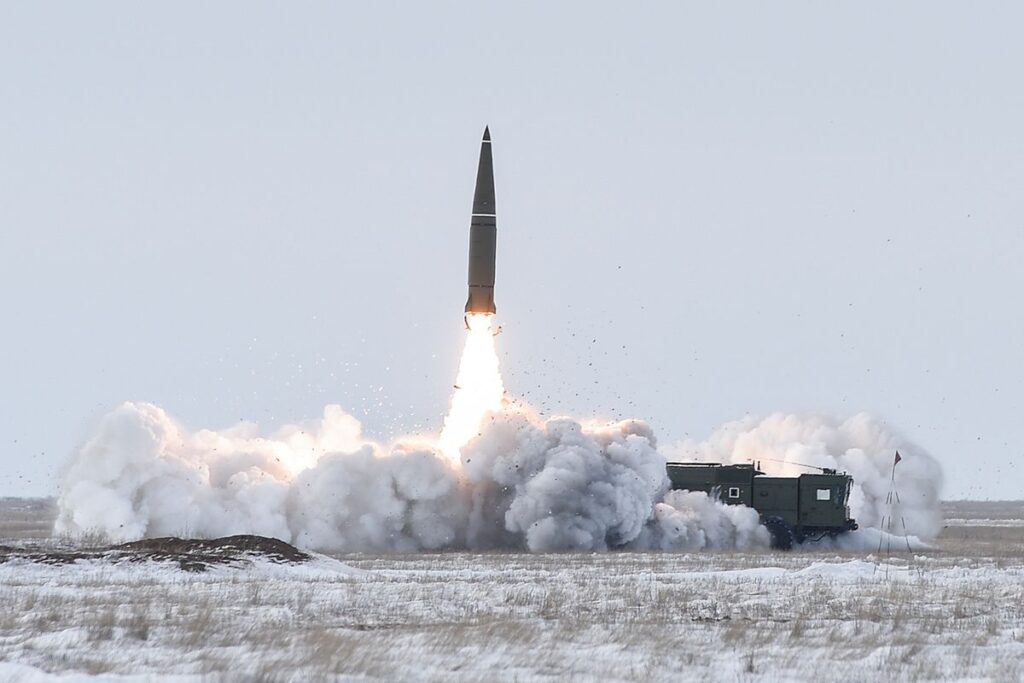
10. **The Value of Combat Experience and Operational Readiness**While the parade offered a “startling visual” display of advanced weaponry, discerning true operational effectiveness requires assessment beyond mere hardware. Ankit Panda, Senior Fellow at the Carnegie Endowment, noted a significant caveat: “China famously hasn’t fought in a proper high-intensity conflict, arguably since the Korean War, certainly since the Sino-Vietnamese war (in 1979).” This lack of recent combat experience raises pertinent questions about the People’s Liberation Army’s (PLA) ability to translate its technological advancements into coordinated battlefield success.
Panda’s observation, drawing parallels with “Russia’s experience in Ukraine,” suggests that simply “count[ing] the beans” is an insufficient metric for military prowess. The ability to integrate diverse systems, command complex operations under fire, and adapt to unforeseen challenges is honed through actual combat—an area where the PLA remains largely untested. This stands in stark contrast to the United States military, whose continuous engagement provides an undeniable repository of operational experience.
To illustrate this disparity, the context pointed to the US strike on Iranian nuclear sites in June, where “seven B-2 stealth bombers dropped 14 of the world’s most powerful conventional weapons on target while not drawing any counterfire.” Such a precision strike, combining stealth, long-range projection, and overwhelming firepower, is currently “hard to imagine within China’s current abilities.” Even as China works on its own stealth bomber, the next-generation US B-21 is already prototyping, underscoring a qualitative gap in high-end, experienced-driven capabilities that parades alone cannot bridge.
Military equipment: United States Army
UnitName: United States Army
StartDate: Continental Army
Dates: Continental Army
Country: Flag
Type: Army
Role: Land warfare
Size: 452,823 active duty personnel
CommandStructure: United States Armed Forces,Department of the Army
Garrison: The Pentagon,Arlington County, Virginia
GarrisonLabel: Headquarters
Motto: “This We’ll Defend”
Colors: [object Object],color box
ColorsLabel: Colors
March: The Army Goes Rolling Along
Mascot: Army Mules
Equipment: List of equipment of the United States Army
Battles: collapsible list
Titlestyle: background:transparent;text-align:left;font-weight:normal;
Title: See list
Anniversaries: U.S. Army Birthdays
Website: {{URL,www.army.mil,army.mil
Commander1: Flagicon image,President of the United States,Donald Trump
Commander1Label: Powers of the president of the United States#Commander-in-chief
Commander2: Flagicon image,Pete Hegseth
Commander2Label: United States Secretary of Defense
Commander3: Flagicon image,Daniel P. Driscoll
Commander3Label: United States Secretary of the Army
Commander4: Flagicon image,General (United States),Randy George
Commander4Label: Chief of Staff of the United States Army
Commander5: Flagicon image,General (United States),James J. Mingus
Commander5Label: Vice Chief of Staff of the United States Army
Commander6: Warrant officer (United States),Aaron H. Anderson
Commander6Label: Chief Warrant Officer of the Army
Commander7: Flagicon image,Sergeant Major of the Army,Michael Weimer
Commander7Label: Sergeant Major of the Army
IdentificationSymbol: File:Flag of the United States Army (official proportions).svg
IdentificationSymbolLabel: Flag of the United States Army
IdentificationSymbol2: File:Field flag of the United States Army.svg
IdentificationSymbol2Label: [object Object]
IdentificationSymbol3: File:Logo of the United States Army.svg
IdentificationSymbol3Label: Logo
Categories: 1775 establishments in the Thirteen Colonies, All Wikipedia articles in need of updating, All Wikipedia articles written in American English, All articles with dead external links, Articles with dead external links from April 2025
Summary: The United States Army (USA) is the primary land service branch of the United States Department of Defense. It is designated as the Army of the United States in the United States Constitution. It operates under the authority, direction, and control of the United States secretary of defense. It is one of the six armed forces and one of the eight uniformed services of the United States. The Army is the most senior branch in order of precedence amongst the armed services. It has its roots in the Continental Army, formed on 14 June 1775 to fight against the British for independence during the American Revolutionary War (1775–1783). After the Revolutionary War, the Congress of the Confederation created the United States Army on 3 June 1784 to replace the disbanded Continental Army.
The U.S. Army is part of the Department of the Army, which is one of the three military departments of the Department of Defense. The U.S. Army is headed by a civilian senior appointed civil servant, the secretary of the Army (SECARMY), and by a chief military officer, the chief of staff of the Army (CSA) who is also a member of the Joint Chiefs of Staff. It is the largest military branch, and in the fiscal year 2022, the projected end strength for the Regular Army (USA) was 480,893 soldiers; the Army National Guard (ARNG) had 336,129 soldiers and the U.S. Army Reserve (USAR) had 188,703 soldiers; the combined-component strength of the U.S. Army was 1,005,725 soldiers. The Army’s mission is “to fight and win our Nation’s wars, by providing prompt, sustained land dominance, across the full range of military operations and the spectrum of conflict, in support of combatant commanders”. The branch participates in conflicts worldwide and is the major ground-based offensive and defensive force of the United States of America.
Get more information about: United States Army
Read more about: India’s $15 Billion Fighter Quest: Unpacking the F-21’s Dual History and Strategic Imperatives

11. **China’s Expanding Naval Dominance**Beyond land-based weaponry, the parade subtly underscored China’s ambitions for naval preeminence. This is a critical dimension in its broader geopolitical strategy, particularly in the Indo-Pacific. A report by the Center for Strategic and International Studies (CSIS) highlighted a pivotal shift in maritime power, projecting that “China is expected to have 48% more battle force ships than the US by 2030.” This numerical superiority at sea represents a formidable challenge to existing naval balances.
Historical analyses of naval warfare lend weight to these projections. A 2023 paper from a US Naval War College professor, examining naval conflicts, concluded that “the bigger fleet almost always wins.” This historical precedent, coupled with China’s aggressive shipbuilding program and advanced anti-ship missiles, signals a clear intent to deter and potentially counter US naval presence in contested waters, notably the Taiwan Strait and the South China Sea.
The deployment of “extra-large unmanned submarines” (XLUUVs) like the AJX002 further exemplifies China’s multi-pronged approach to naval dominance. These underwater drones, “18-20 metres long,” are designed for reconnaissance, torpedo deployment, or mine-laying, and possess the ability to “operate undetected in contested waters.” With China boasting “the world’s largest XLUUV programme,” these autonomous systems fundamentally challenge traditional submarine warfare, reshaping regional security dynamics.
Military equipment: Foreign policy of China
Categories: All Wikipedia articles written in American English, All articles containing potentially dated statements, All articles with unsourced statements, Articles containing potentially dated statements from 2023, Articles with excerpts
Summary: The People’s Republic of China emerged as a great power and one of the three big players in the tri-polar geopolitics (PRC-US-USSR) during the Cold War, after the Korean War in 1950–1953 and the Sino-Soviet split in the 1960s, with its status as a recognized nuclear weapons state. Currently, China has one of the world’s largest populations, second largest GDP (nominal) and the largest economy in the world by PPP.
In 1950–1953 it fought an undeclared war in Korea against the United States. Until the late 1950s it was allied with the Soviet Union but by 1960 they began a bitter contest for control over the local communist movement in many countries. It reached détente with the United States in 1972. After Chinese Communist Party chairman Mao Zedong died in 1976, Deng Xiaoping led a massive process of industrialization and emphasized trade relations with the world, while maintaining a low key, less ideological foreign policy, widely described by the phrase Taoguang Yanghui, or “hide one’s talent and bide one’s time”. The Chinese economy grew very rapidly giving it steadily increasing power and ambition.
Since Xi Jinping became General Secretary of the Chinese Communist Party in 2012, China has expanded its foreign policy ambitions on the global scale, even as it retains an emphasis on ‘periphery diplomacy’ or its neighborhood. China is investing heavily in global infrastructure, citing a desire for economic integration. It is also investing in strategic locations to secure its trade and security interests. It calls these programs the Belt and Road Initiative (formerly “One Belt, One Road”) and the “Maritime Silk Road”, which it sees as part of its goal of self-sufficiency.
Since 2017 it has engaged in a large-scale trade war with the United States. It is also challenging U.S. dominance in the Pacific and Indian Ocean, expanding its military naval and diplomatic efforts. Part of this is the String of Pearls strategy securing strategic locations in the Indian Ocean and Strait of Malacca region.
Get more information about: Foreign policy of China
Read more about: The Geopolitical Reckoning: Trump’s Tariff Gambit Collides with Global Realities

12. **The Geopolitical Vacuum and China’s Diplomatic Seizure**The parade occurred at a moment when global power dynamics are undergoing significant flux, particularly concerning the role of the United States. Diplomatic correspondent James Landale observed that China is “filling the vacuum left by America’s withdrawal from international norms and institutions” with remarkable speed. This strategic maneuver, often spurred by “economic nationalism and disruptive diplomacy” from the US, offers China a “huge diplomatic opportunity” that President Xi is seizing with “open arms.”
This emerging “Chinese-led world order,” as Landale describes it, suggests a future where principles like “territorial integrity and human rights are valued less than raw power and economic development.” Such a shift could prove profoundly uncomfortable for many Western countries. The parade sent “a clear message to the Trump administration” that an alternative to the US-led order is actively being constructed.
Indeed, the alignment of China, Russia, and India at the Shanghai Cooperation Organisation summit, and the subsequent appearance of Xi, Putin, and Kim Jong Un, explicitly showcased these emerging geopolitical alignments. Trump’s reaction on Truth Social, accusing them of “conspir[ing] against The United States of America,” underscored the perceived threat to US hegemony. This “alternative to the US-led order” signals a significant reordering of global alliances and a challenge to the unipolar moment of past decades.
Military equipment: Foreign relations of China
Categories: All Wikipedia articles in need of updating, All accuracy disputes, All articles containing potentially dated statements, All articles that may be too long, All articles with dead external links
Summary: China, officially the People’s Republic of China (PRC), has full diplomatic relations with 180 out of the other 192 United Nations member states, Cook Islands, Niue and the State of Palestine. As of 2024, China has had the most diplomatic missions of any state.
China officially claims it “unswervingly pursues an independent foreign policy of peace”. The fundamental goals of this policy are to preserve China’s independence, sovereignty and territorial integrity, create a favorable international environment for China’s reform and opening up and modernization of construction, and to maintain world peace and propel common development.” An example of a foreign policy decision guided by “sovereignty and territorial integrity” is not engaging in diplomatic relations with any country that recognizes the Republic of China (Taiwan), which the PRC does not recognize as a separate nation.
China is a member of many international organizations, holding key positions such as a permanent membership on the United Nations Security Council. In the early 1970s, the PRC replaced the ROC as the recognized government of “China” in the UN following Resolution 2758. As a nuclear power, China signed the Treaty on the Non-Proliferation of Nuclear Weapons in the United Nations.
Get more information about: Foreign relations of China
13. **Global Ripples: The Dawn of an Arms Race and Strained Alliances**The comprehensive display of China’s military advancements will undoubtedly send “shivers down Western diplomatic spines” and generate profound “global ripples.” The unveiling of cutting-edge military technology compels rival nations to “rethink defenses.” This reevaluation inevitably risks triggering a new, accelerated “arms race” as countries strive to maintain or regain a competitive edge.
Economically, the implications are equally significant. China’s “industrial might” and capacity to produce weaponry “in larger volume” and “faster than what you’re seeing happen in the West” places considerable pressure on global supply chains and defense industries. This indigenous development capability allows Beijing to avoid being “coerced” by foreign suppliers, a strategic advantage that forces other nations to reassess their own industrial bases and technological dependencies.
Diplomatically, the parade serves to “embolden allies like Russia and North Korea,” cementing a bloc that increasingly challenges established international norms. The spectacle underscores a “multipolar world” where power, rather than peace, may dictate future interactions. For nations like India, balancing cooperation with caution, the parade acts as a “wake-up call” to navigate a profoundly shifting global landscape, characterized by rising risks of confrontation and the potential for strained alliances, demanding astute strategic foresight from all actors.
Military equipment: List of One Piece characters
Categories: All articles that may be too long, All articles that need to differentiate between fact and fiction, All articles with dead external links, Articles containing German-language text, Articles containing Japanese-language text
Summary: The One Piece manga features an extensive cast of characters created by Eiichiro Oda. The series takes place in a fictional universe where vast numbers of pirates, soldiers, revolutionaries, and other adventurers fight each other, using various superhuman abilities. The majority of the characters are human, but the cast also includes dwarfs, giants, mermen and mermaids, fish-men, sky people, and minks, among many others. Many of the characters possess abilities gained by eating “Devil Fruits”. The series’ storyline follows the adventures of a group of pirates as they search for the mythical “One Piece” treasure.
Monkey D. Luffy is the series’ main protagonist, a young pirate who wishes to succeed Gold Roger, the deceased King of the Pirates, by finding his treasure, the “One Piece”. Throughout the series, Luffy gathers himself a diverse crew named the Straw Hat Pirates, including: the three-sword-wielding combatant Roronoa Zoro (sometimes referred to as Roronoa Zolo in the English manga); the thief and navigator Nami; the cowardly marksman and inventor Usopp; the amorous cook and martial artist Sanji; the anthropomorphic reindeer and doctor Tony Tony Chopper; the archaeologist Nico Robin; the cyborg shipwright Franky; the living skeleton musician Brook; and the fish-man helmsman Jimbei. Together they sail the seas in pursuit of their dreams, encountering other pirates, bounty hunters, criminal organizations, revolutionaries, secret agents and soldiers of the corrupt World Government, and various other friends and foes.
Get more information about: List of One Piece characters

14. **Redefining 21st Century Warfare: Intelligent and Autonomous Systems**Perhaps the most forward-looking aspect of China’s parade was the emphasis on “intelligent warfare” through autonomous and networked capabilities. Ankit Panda highlighted the presence of “a lot of autonomous capabilities, network capabilities, modern 21st century warfighting systems.” This focus on unmanned and artificially intelligent platforms signals a fundamental shift in military doctrine and the future of combat.
The “impressive array of drones” on display, encompassing “extra-large unmanned submarines” (XLUUVs), ground drones for combat and logistics, and “loyal wingmen” aircraft, demonstrates China’s deep investment. These systems are designed to operate with increasing autonomy, enhancing the survivability of manned aircraft and performing complex, dangerous tasks. Malcolm Davis of ASPI observed that these unmanned systems are “quite significantly advanced,” and “in operational service.”
The integration of directed energy weapons, such as lasers for drone defense, further underscores this paradigm shift. These systems offer “stealthy, cost-effective threat[s],” capable of neutralizing drone swarms or disabling electronic systems with unprecedented efficiency. This blend of AI, autonomous platforms, and energy weapons suggests a future battlefield where traditional kinetic engagements are supplemented, if not supplanted, by sophisticated electronic and intelligent warfare. For adversaries, this demands a complete re-evaluation of defense strategies, as China actively redefines the very parameters of modern conflict.
Military equipment: Artificial intelligence
Categories: All accuracy disputes, Articles with Internet Encyclopedia of Philosophy links, Articles with disputed statements from July 2024, Articles with excerpts, Articles with short description
Summary: Artificial intelligence (AI) is the capability of computational systems to perform tasks typically associated with human intelligence, such as learning, reasoning, problem-solving, perception, and decision-making. It is a field of research in computer science that develops and studies methods and software that enable machines to perceive their environment and use learning and intelligence to take actions that maximize their chances of achieving defined goals.
High-profile applications of AI include advanced web search engines (e.g., Google Search); recommendation systems (used by YouTube, Amazon, and Netflix); virtual assistants (e.g., Google Assistant, Siri, and Alexa); autonomous vehicles (e.g., Waymo); generative and creative tools (e.g., language models and AI art); and superhuman play and analysis in strategy games (e.g., chess and Go). However, many AI applications are not perceived as AI: “A lot of cutting edge AI has filtered into general applications, often without being called AI because once something becomes useful enough and common enough it’s not labeled AI anymore.”
Various subfields of AI research are centered around particular goals and the use of particular tools. The traditional goals of AI research include learning, reasoning, knowledge representation, planning, natural language processing, perception, and support for robotics. To reach these goals, AI researchers have adapted and integrated a wide range of techniques, including search and mathematical optimization, formal logic, artificial neural networks, and methods based on statistics, operations research, and economics. AI also draws upon psychology, linguistics, philosophy, neuroscience, and other fields. Some companies, such as OpenAI, Google DeepMind and Meta, aim to create artificial general intelligence (AGI)—AI that can complete virtually any cognitive task at least as well as a human.
Artificial intelligence was founded as an academic discipline in 1956, and the field went through multiple cycles of optimism throughout its history, followed by periods of disappointment and loss of funding, known as AI winters. Funding and interest vastly increased after 2012 when graphics processing units started being used to accelerate neural networks and deep learning outperformed previous AI techniques. This growth accelerated further after 2017 with the transformer architecture. In the 2020s, an ongoing period of rapid progress in advanced generative AI became known as the AI boom. Generative AI’s ability to create and modify content has led to several unintended consequences and harms, which has raised ethical concerns about AI’s long-term effects and potential existential risks, prompting discussions about regulatory policies to ensure the safety and benefits of the technology.
Get more information about: Artificial intelligence
The grand spectacle in Beijing transcended a mere military parade; it was a comprehensive declaration of China’s ambition and growing power, meticulously choreographed to announce a new era in global affairs. From the striking unity of a “new axis of upheaval” to the historical resonance of Tiananmen Square, and from the formidable industrial might to the innovative embrace of intelligent warfare, every element converged to project President Xi Jinping’s vision for a China-centric global order. While the sheer volume of advanced weaponry is undeniable, questions of combat experience and the qualitative edge in certain high-end capabilities remain pertinent. Yet, the message is clear: China is not merely catching up, but in many critical areas, it is actively charting a new course for international relations and the future of military engagement, compelling the world to grapple with its profound and evolving implications.

